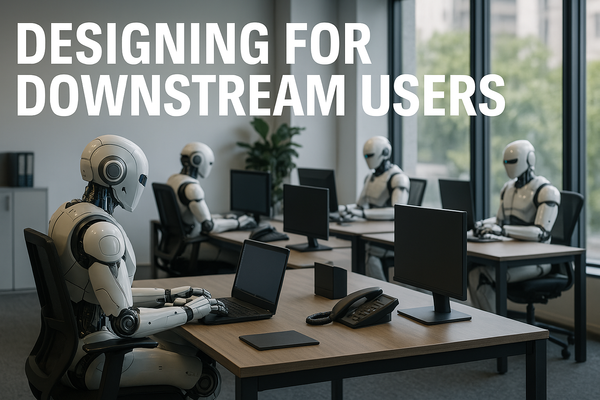Gen AI and the Future of SaaS: Navigating the Inflection Point for Sustainable Advantage

With the rapid evolution of generative AI (Gen AI) and AI Agents, companies are rethinking the balance between in-house capabilities and specialized SaaS solutions. Klarna, the global financial services platform, recently severed ties with certain SaaS providers, opting instead to leverage AI to build tailored solutions internally. This decision underscores a growing trend—AI's accessibility and power are narrowing traditional trade-offs that once favored SaaS, prompting companies to explore in-house options for customization, cost control, and strategic advantages.
This shift reveals a larger industry transformation: as AI tools make it easier and cheaper to generate software, the intrinsic value of code itself is diminishing. Code is increasingly becoming commoditized—an accessible, replicable resource rather than a unique differentiator. SaaS providers now face the challenge of redefining their value proposition, emphasizing not just software but also the surrounding expertise, scalability, and measurable ROI they provide.
However, this transition is not without its complexities. Organizations must grapple with cultural shifts, skill gaps, and the risks inherent in developing and maintaining AI solutions internally. For product leaders, understanding these multifaceted challenges is crucial to building better products in the next generation of AI.
To illustrate these dynamics, consider a mid-sized e-commerce business evaluating whether to replace its SaaS-based customer support platform with an in-house solution where AI is used to bridge the gap between their internal teams and the SaaS providers coding capabilities and scale. The company weighs the potential cost savings and customization benefits against the risks and challenges of developing, deploying, and maintaining a proprietary system.
This example serves as a backdrop as we delve deeper into the core problems arising from this shift, examine the economic inflection points driving decisions around SaaS versus in-house Gen AI, and explore practical insights for product leaders aiming to make strategic choices in this evolving landscape.
The Core Challenges: Beyond Economics to Organizational Impact
Cultural and Organizational Shifts
The decision to build in-house AI solutions extends beyond financial considerations; it fundamentally alters the organization's culture and operational dynamics. Developing AI capabilities internally requires a workforce skilled in AI and machine learning, which may necessitate significant investment in talent acquisition and training. This shift can impact team dynamics, as existing staff may need to adapt to new roles or collaborate closely with specialized AI teams.
Moreover, organizations must foster a culture of continuous learning and innovation to stay abreast of rapidly evolving AI technologies. This cultural shift can be challenging, as it demands flexibility, openness to change, and a willingness to experiment—qualities that may not be deeply ingrained in all corporate environments.
Risk Management and Technical Debt
Building and maintaining solutions in-house which depend deeply on AI introduces risks related to technical debt and project management. The initial development phase may seem manageable, but over time, the complexities of updating models, ensuring data quality, and integrating new features can accumulate, leading to maintenance overheads that erode anticipated cost savings.
There's also the risk of project failures due to unforeseen technical challenges or shifts in business priorities. Without the broad experience and resources of specialized SaaS providers, companies may struggle to troubleshoot issues efficiently, leading to downtime or degraded performance that impacts customer satisfaction.
The Economic Inflection Points: Why Companies Are Considering Replacing SaaS
As companies weigh in house development, that is augmented by Gen AI, against traditional SaaS models, the decision hinges on a blend of economics, control, and strategic alignment. Let's step into the shoes of our e-commerce company to explore these considerations.
1. Control vs. Cost: Evaluating True Savings Against Hidden Expenses
Historically, SaaS was the default choice because building specialized solutions was prohibitively expensive and complex. Gen AI has lowered these barriers by making sophisticated development capabilities more accessible. Our e-commerce company sees an opportunity to customize its customer support tools to align more closely with unique workflows, potentially reducing ongoing SaaS subscription fees that scale with usage.
However, anticipated savings must be balanced against hidden costs. Developing and maintaining internal solutions which are highly dependent on AI involves expenses related to infrastructure, talent acquisition, and ongoing support. Creating AI with more than just general knowledge requires expertise and the creation and or maintenance of RAG applications in order to deliver true value. Unexpected issues, such as model drift or security vulnerabilities, can add unplanned costs and resource demands.
Product Leader Insight: Assess cost-effectiveness by tracking KPIs like total cost of ownership over time, including maintenance and upgrade expenses. SaaS providers can demonstrate ROI by highlighting cost savings from economies of scale and the value of dedicated support teams that can preemptively address issues before they impact operations.
2. Speed-to-Market vs. Customization: Weighing Immediate Benefits Against Long-Term Flexibility
Speed-to-market has been a key advantage of SaaS, offering immediate access to robust features. Gen AI reduces the development time for in-house solutions, but not all companies can match the deployment speed and reliability of established SaaS platforms. Our e-commerce company might deploy a basic AI-driven support tool quickly but could face delays refining it to match the feature set and stability of a mature SaaS product.
Customization offers long-term flexibility but can slow initial deployment and requires ongoing investment to maintain feature parity with SaaS competitors. There's also the risk that the in-house solution may not scale efficiently as the company grows or customer needs evolve.
Product Leader Insight: Measure KPIs related to deployment times, feature update frequency, and user adoption rates. SaaS providers can leverage their ability to rapidly roll out new features and updates without burdening the client's internal resources.
3. Data Sensitivity and Compliance: Managing Security Risks and Regulatory Requirements
Data privacy and compliance are critical, particularly for customer-facing applications handling sensitive information. While in-house solutions offer greater control over data handling, they also place the onus of security and compliance entirely on the company. Our e-commerce business must invest in robust security measures, stay updated with evolving regulations, and be prepared for audits—all of which require specialized expertise.
SaaS providers often have dedicated compliance teams and security infrastructure certified to industry standards, reducing the risk and burden on the client. The economies of scale allow SaaS companies to invest more heavily in security measures than individual businesses might find feasible.
Product Leader Insight: Evaluate KPIs around security incidents, compliance audit results, and time spent on regulatory management. SaaS providers can highlight their compliance certifications and proactive security measures as key differentiators.
4. Scalability Equation: Balancing Growth Ambitions with Operational Complexity
Scaling AI solutions is not merely a matter of adding more servers; it involves ensuring that models perform reliably under increased loads, managing data pipelines, and maintaining system integrity. Our e-commerce company might handle current volumes but could struggle with spikes during peak shopping seasons or rapid growth phases.
SaaS solutions are designed to scale seamlessly, absorbing fluctuations in demand without compromising performance. This reliability can be crucial for businesses where customer experience directly impacts revenue and brand reputation.
Product Leader Insight: Focus on KPIs such as system scalability metrics, performance during peak loads, and customer experience indicators like page load times and transaction success rates. SaaS providers can emphasize their track record in handling large-scale operations without service degradation.
AI Limitations: Recognizing the Boundaries of In-House Solutions
While Gen AI empowers businesses to develop sophisticated software, it has limitations that can impact the viability of in-house solutions.
Quality and Reliability Concerns
AI-generated code may not match the quality and reliability of software developed by experienced engineering teams, meaning the solution relies heavily on the presence of a strong in-house development team to partner with AI. This is something not all companies have. Bugs, inefficiencies, and security vulnerabilities can slip through, especially if the internal team lacks deep expertise in software engineering best practices. This can lead to higher long-term costs due to maintenance and the need for refactoring.
Security Risks
In-house AI solutions can be more susceptible to security breaches if not properly secured. SaaS providers typically have advanced security protocols, regular penetration testing, and dedicated teams monitoring for threats. Companies developing their own solutions must replicate these efforts to ensure comparable security levels.
Product Leader Insight: Consider KPIs related to software quality, such as defect rates, patch deployment times, and security incident frequency. Highlighting these risks can inform a more balanced decision-making process.
Attack Vectors for SaaS: Strategies to Retain Competitive Advantage
With the democratization of AI capabilities, SaaS providers must leverage their inherent strengths to offer compelling value propositions that in-house solutions cannot easily replicate.
1. Leveraging Deep Niche Expertise and Compliance Mastery
SaaS providers can focus on specialized domains where they possess deep expertise and understanding of industry-specific regulations. By offering solutions tailored to niche markets, they can provide value that generic AI tools cannot match.
Product Leader Strategy: Emphasize domain-specific KPIs, such as compliance adherence rates, industry benchmark comparisons, and customer testimonials from similar businesses. This positions the SaaS provider as a trusted partner with proven success in the client's sector.
2. Delivering Superior Quality and Reliability
By maintaining high standards of software quality and reliability, SaaS providers can alleviate concerns associated with in-house development. Offering robust support, regular updates, and comprehensive testing protocols ensures that clients receive a stable and secure product.
Product Leader Strategy: Highlight KPIs such as uptime percentages, mean time to resolution for support issues, and frequency of feature updates. Demonstrating a commitment to quality and continuous improvement reinforces the value of the SaaS solution.
3. Providing Cost-Effective Scalability and Support
SaaS providers can showcase their ability to scale efficiently without the client needing to invest in additional infrastructure or personnel. Just like the customer, they can leverage AI to bring down costs and improve outcomes. They can also use their scale to offering flexible pricing models and dedicated support that can't be matched in house. Doing this, they can accommodate the evolving needs of growing businesses.
Product Leader Strategy: Track scalability KPIs, including cost per additional user and performance metrics under increased loads. Providing case studies of clients who have successfully scaled using the SaaS solution can be persuasive.
Outlook: Speculating on the Evolution of SaaS in the Age of AI
The interplay between AI, coding, and SaaS are poised to reshape the technology landscape even further. SaaS providers may evolve in several ways to maintain relevance and competitiveness. In this moment, SaaS providers cannot afford to have a dogmatic loyalty to 'the way things were' and must instead make calculated pivots.
Evolving into AI-as-a-Service Platforms
SaaS companies might transition into AI-as-a-Service providers, offering customizable AI tools that clients can tailor to their specific needs. By providing platforms for AI model hosting, training, and deployment, they can combine the benefits of in-house customization with the support and scalability of SaaS.
Focusing on Data Services and Insights
With code commoditization, the value may shift toward data and the insights derived from it. SaaS providers can leverage their access to vast amounts of aggregated data to offer advanced analytics, benchmarking, and predictive modeling services that clients cannot develop independently due to limited data scope.
Embracing Collaborative Hybrid Models
Future models may involve closer collaboration between SaaS providers and clients, offering hybrid solutions that integrate in-house systems with SaaS platforms. Instead of choosing between in-house systems and SaaS platforms, companies can integrate them, maintaining control over their critical components while tapping into the strengths of SaaS in security, compliance, data and scalability. For example, a business might keep its proprietary customer data management in-house but use a SaaS provider's advanced analytics, breadth of industry data, expertise, and security features. This collaborative approach empowers companies to customize core functions to their exact needs while benefiting from the SaaS provider's expertise and infrastructure, leading to more innovative and resilient solutions.
Product Leader Insight: Anticipate these shifts by investing in flexible architectures, exploring partnerships, and staying attuned to emerging client needs. Being proactive in adapting to technological trends will position SaaS providers favorably in the evolving market.
Conclusion: Navigating the Transformation with Strategic Insight
As technology rapidly evolves, the most successful SaaS companies will strategically adapt—leveraging their strengths to offer unique value that enhances the capabilities unlocked by Gen AI.
Product leaders, it's time to act:
- Innovate Beyond Code: Deliver exceptional value through specialized expertise and superior customer experiences that aren't easily replicated.
- Collaborate Strategically: Combine in-house systems with SaaS strengths in security, compliance, and scalability.
- Anticipate Trends: Invest in emerging technologies and stay responsive to shifting customer needs.
By proactively adapting, you can secure a resilient position in an increasingly competitive environment.
Let's shape the future of SaaS together—embrace innovation, foster collaboration, and seize the opportunities Gen AI presents.



